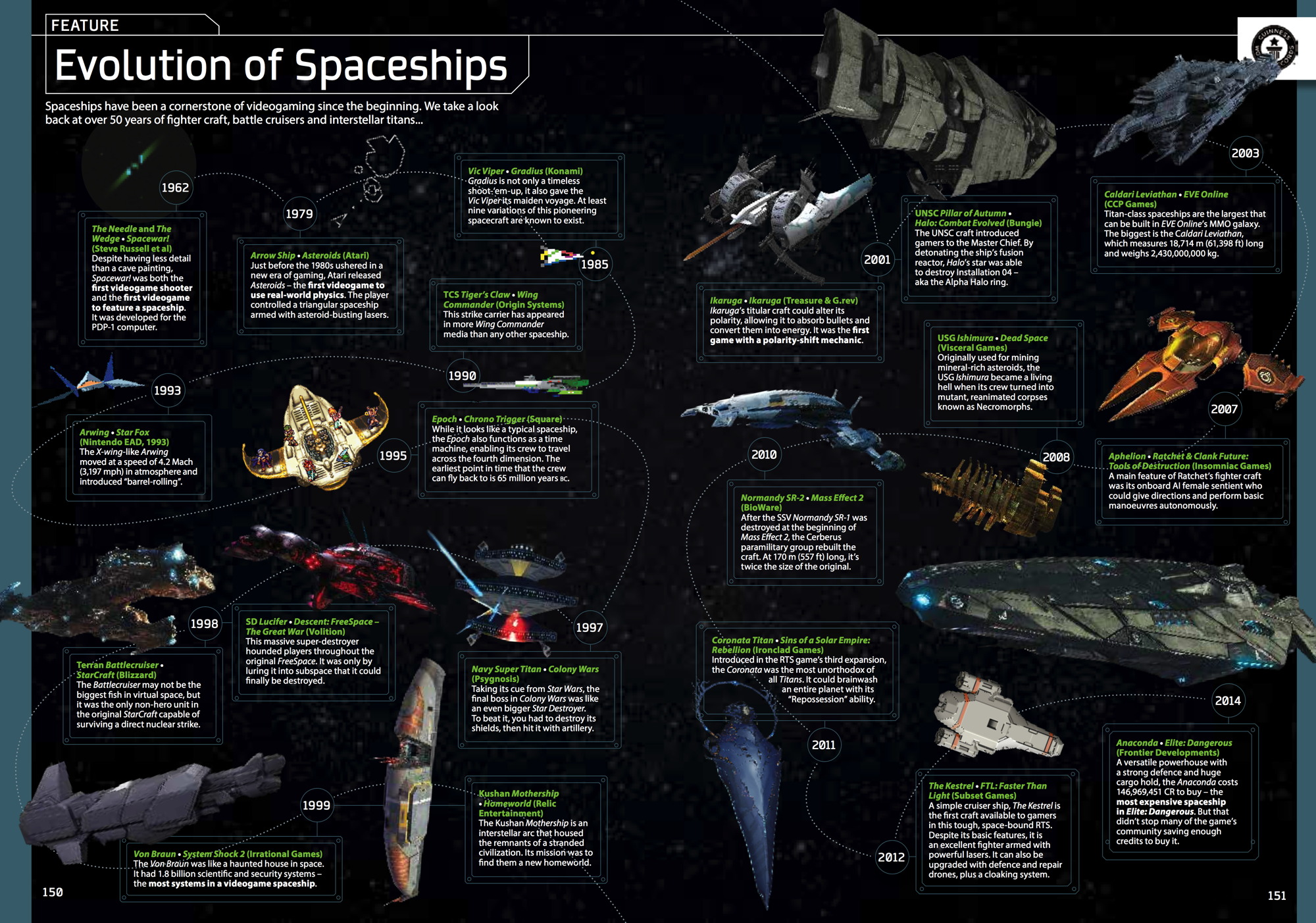Evolution of Video-Game Spaceships Traced in 'Guinness World Records 2016 Gamer's Edition'

This awesome new image from the folks behind the Guinness World Records traces the evolution of video-game spaceships, from the simple dots and dashes of "Spacewar!" in 1962 to the hyperrealistic Anaconda craft of "Elite: Dangerous" in 2014.
Fresh from the newly published "Guinness World Records 2016 Gamer's Edition" — released today (Sept. 10) along with "Guinness World Records 2016" — this "Evolution of Spaceships" feature hits the highlights of galactic transportation and combat through the ages.
The very first video-game shooter also featured the first video-game spaceship: "Spacewar!" players in 1962 faced off in ships titled "The Needle" and "The Wedge" in a game "having less detail than a cave painting," according to the infographic.
"Spacewar!" took place in the gravity well of a star, but any shots exchanged took a straight path across the screen; there wasn't enough processing power to send them in a realistic trajectory. It wasn't until "Asteroids" in 1979 that a video game used real-world physics, faithfully reproduced as the iconic Arrow Ship zapped incoming space rocks to survive.
Since then, there's been an explosion in virtual spaceships paralleling the explosion of games, each unique in its look, attributes and uses in the game — and the new infographic points out the unusual qualities, strengths and weaknesses of many of the ships.
For instance: "Chrono Trigger" (1995) had the Epoch, a fast-moving ship that did double duty as a time machine, while the USG Ishimura in "Dead Space" (2008) hosted a crew of reanimated corpses for the player to battle.
The Navy Super Titan from "Colony Wars" (1997) acted as the game's final boss with heavy firepower and shields to be destroyed, and the Terran Batlecruiser in "StarCraft" (1998) could survive a direct nuclear strike. There were at least nine incarnations of the Vic Viper from the shoot-'em-up "Gradius" (1985), and the Anaconda from "Elite: Dangerous" (2014) represents the open galaxy adventure's most expensive spaceship at 146,969,451 credits.
Breaking space news, the latest updates on rocket launches, skywatching events and more!
Looking at more than 50 years of video game spaceship history, only one thing remains constant: A spaceship can fill any video-game niche, but it always spells adventure.
You can learn more about the 2016 Guinness World Records here: www.guinnessworldrecords.com/2016.
Email Sarah Lewin at slewin@space.com or follow her @SarahExplains. Follow us @Spacedotcom, Facebook and Google+. Original article on Space.com.

Sarah Lewin started writing for Space.com in June of 2015 as a Staff Writer and became Associate Editor in 2019 . Her work has been featured by Scientific American, IEEE Spectrum, Quanta Magazine, Wired, The Scientist, Science Friday and WGBH's Inside NOVA. Sarah has an MA from NYU's Science, Health and Environmental Reporting Program and an AB in mathematics from Brown University. When not writing, reading or thinking about space, Sarah enjoys musical theatre and mathematical papercraft. She is currently Assistant News Editor at Scientific American. You can follow her on Twitter @SarahExplains.

